Content Marketing Attribution
57% of B2B users make their purchasing decisions without speaking to a salesperson. This can either be because of a product-led growth strategy where your products sell themselves or because of highly effective and targeted content marketing and inbound marketing strategies.
Now, while it’s undeniable that content has incredible potential to persuade your potential customers to make a purchase, it’s also true that one piece of content is often not enough to entice potential customers to buy.
You need to follow your users’ touchpoints and create a content marketing strategy according to their needs and requirements. That’s why content marketing attribution is integral to the success of your B2B company. But what exactly is content marketing attribution? And what are some attribution models that can help you measure your content marketing success? Read on for answers to all these questions.
What is content marketing attribution?
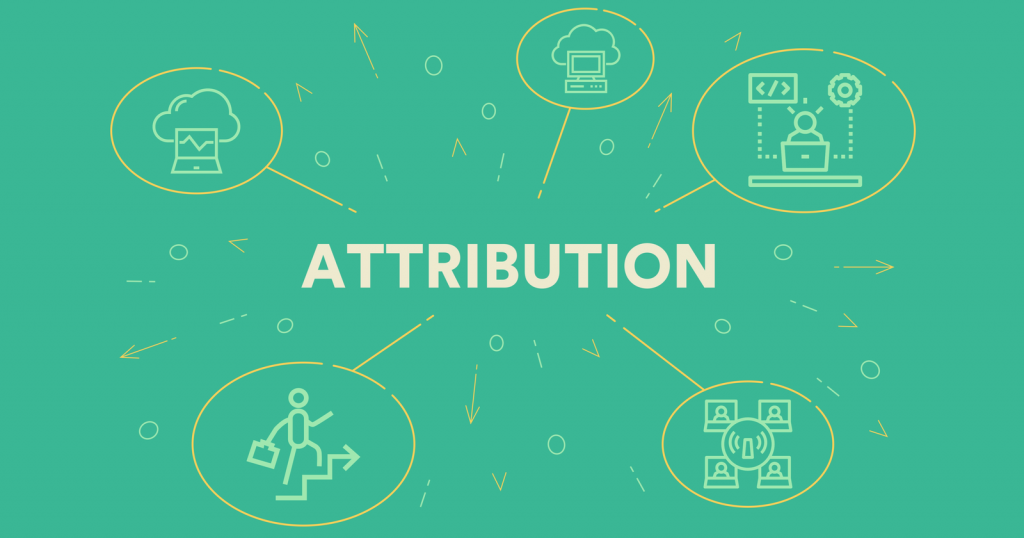
Content attribution is process of finding out which pieces of content contributed the most to a sale. Thanks to content attribution, you can determine which of your content resonates the most with users and find ways to improve both existing and future content.
Since content performs differently on each channel, you can also use content attribution to optimize each content channel by weighing it appropriately. Performing content creation in the most optimized way will not only increase your return on investment. In fact, doing so also allows you to use your content marketing budget most accurately and effectively.
Models You Can Use
You can leverage different attribution models to see which content leads to a purchase or conversion in the user journey. These attribution models attribute different percentages of importance to different content. Therefore, choosing the attribution model that most closely matches your company and user behavior for successful content marketing is essential.
Choosing the most effective attribution model lets you learn which messages and content channels your users are exposed to. This helps you identify with accuracy which content plays the most significant role in your users’ purchasing decisions and which ones help improve brand perception.
Let’s take a look at some content attribution models in detail:
First Touch Model
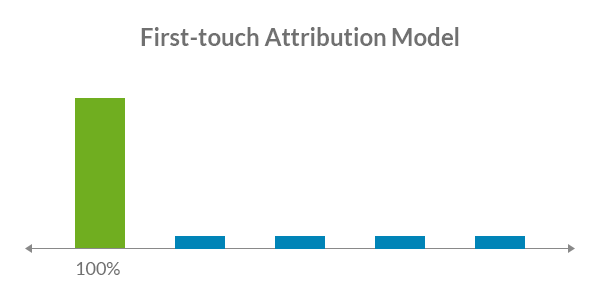
The First-Touch Model is a single-touch attribution model. Also known as the First-Interaction model, this model gives all of the credit of a purchase to the first piece of content that a customer consumes. Let’s illustrate this with the following user journey:
- Social Media: Your user first comes across an Instagram post and leads to your website.
- Blog: The same user reads a blog post about your product.
- White Paper: The user comes across one of your white papers while researching.
- Video: The user watches a video explaining your product.
- Case Study: The user finally examines your case study and decides to make a purchase.
If you analyze this scenario using the first-touch attribution model, you attribute all the purchase success to the Instagram post, i.e first piece of content that the user interacts with.
This model helps you track the channel or piece of content that helped you grab your users’ attention for the first time. So, if your main goal is to measure the impact of your brand awareness on your purchases and conversions, this attribution model will suit you. That said, this attribution does not really do the sales funnel much justice as it completely disregards all steps after the first one. Hence, if your goal is to see how much success you get through your different content marketing channels, this may not be the right model for you.
Last Touch Model
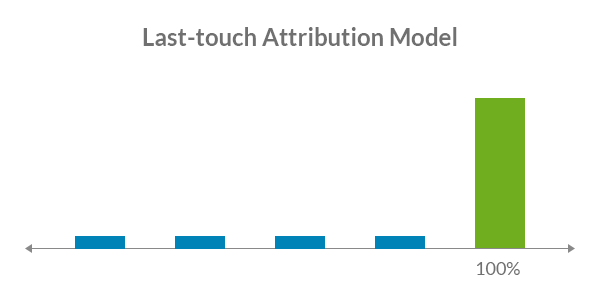
In contrast to the First-Touch attribution model, the Last-Touch attribution model (aka Converter or Last-Interaction attribution model) is based on the content that the user most recently interacted with. Considering the customer journey mentioned in the previous example, according to the Last-Touch attribution model, all success in the user’s purchase is the result of the last piece of content i.e. the case study that the user viewed. This model is also one of the Single-Touch Attribution models, and the content visited, except for the last content, is considered to have zero contribution to conversion.
The pros and cons of this model are similar to the First-Touch attribution model. If you don’t have different content channels and your users’ engagement cycles are short, it might make sense to count the last interacted content as the reason for success. That said, the Last-Touch attribution model is simple to examine and requires no extra effort. Remember though, just like the First-Touch association model, this model will not be sufficient for complex user journeys.
Linear Model
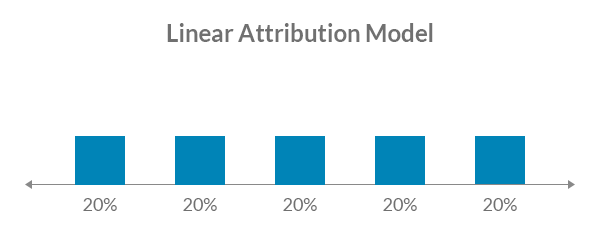
The linear attribution model is one of the Multi-Chanel attribution models. This model considers all content interactions equally important, from the user’s first interaction to the last before purchasing. So, considering the same example from earlier, if there are five touchpoints that contributed to the purchase, each one of these touchpoints will be given equal weightage. In this situation, each content piece will be considered to have contributed 20% to the sale.
The best thing about the linear model is that, unlike Single-Touch attribution models, it considers the whole strategy and gives value to each piece of content. In addition, it is easy to add the linear model to your users’ purchasing processes because it does not require complex analytical skills. Therefore, the linear model will be better if you have a relatively long sales cycle. However, in some situations in daily life, not all content that users consume is equally important. While some content hardly affects the user’s purchasing decision, some content may be the keystone of the user’s decision. Therefore, the linear model may be too simple for analysis in some cases.
Here’s a screenshot from HockeyStack demonstrating how data from a linear, First-Touch model may look:

Dashboards You Can Use
Blog Posts That Drive revenue
Every piece of content you create is intended to offer some benefits be it in the form of increased revenue or more brand awareness. That said, at times, you might just want to see which pieces of content are really driving revenue – and the most revenue at it. For this reason, you can create a Blog Post that Drive Revenue dashboard to track the MRR of each blog post and see exactly what your content means in terms of signups and expansions too.
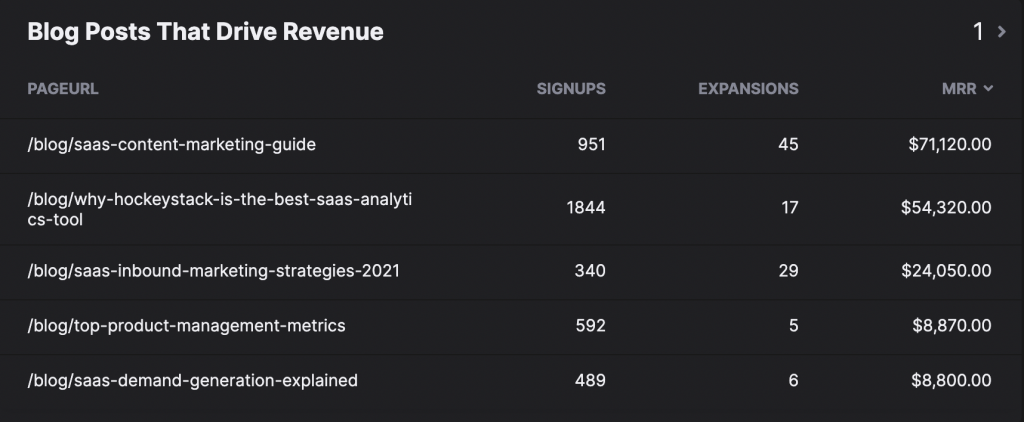
The dashboard above shows that the content marketing guide has been the most revenue-generating content. That gives you information about your user profile. For example, most users who make purchases are interested in content marketing. So content marketers are a profitable user segment. You can even leverage reports and funnels to identify users’ content consumption habits and segment your users based on behavior.
Content Activation Rate
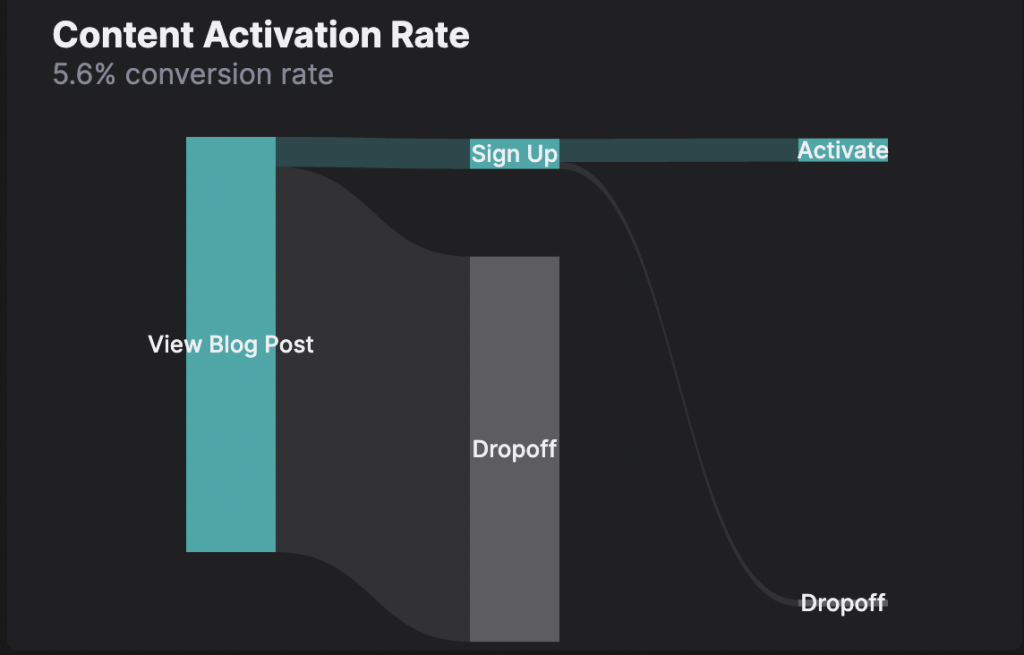
Content activation is essentially the process of educating your users about the sales process using marketing content. B2B companies must activate content and activate buyers with content. With this content marketing dashboard, you can see how successful you are in this process and draw a roadmap accordingly. For example, suppose your activation rate is lower than your target. In that case, you can try optimizing the content that you’re producing and offer a more personalized content experience for your users to reach your goal.
Content Lead Quality
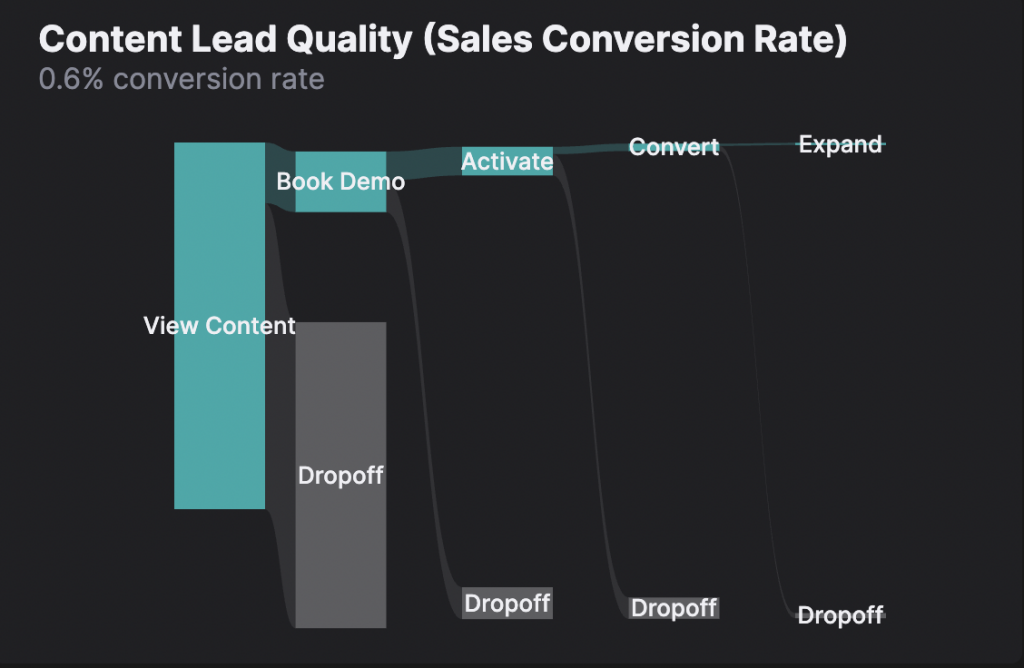
The topics you choose to write about must resonate with your target audience. If you are a B2B company for large businesses, producing popular content for startups will not make sense. Instead, creating content around the pain points of B2B companies will be a better idea and is bound to get more traction. For this reason, it is essential to follow the path of viewers with this dashboard to attract a more profitable customer segment.
Internal Links

Internal links are one of the most helpful ways to keep your visitors on your site. That’s why it’s vital to gauge whether your internal linking strategy is working. Your users may not have found what they were looking for while reading a piece of your content. Or, they may be distracted by various external factors. For this reason, it is helpful to direct your visitors to other exciting and relevant content. In addition, you should organize your internal links in a way that triggers the purchase. If the internal links in your content are convincing users to buy, you have a successful internal linking strategy. It would be sensible to use the Internal Linking dashboard to keep track of all these.
Conclusion
Content marketing attribution is fundamental, especially in SaaS companies, where content marketing plays a crucial role in increasing the number of purchases and conversions. You need to identify the appropriate content attribution model and regularly monitor important content marketing-related metrics. Start using a content attribution tool like HockeyStack today to find out how effective your content really is.



